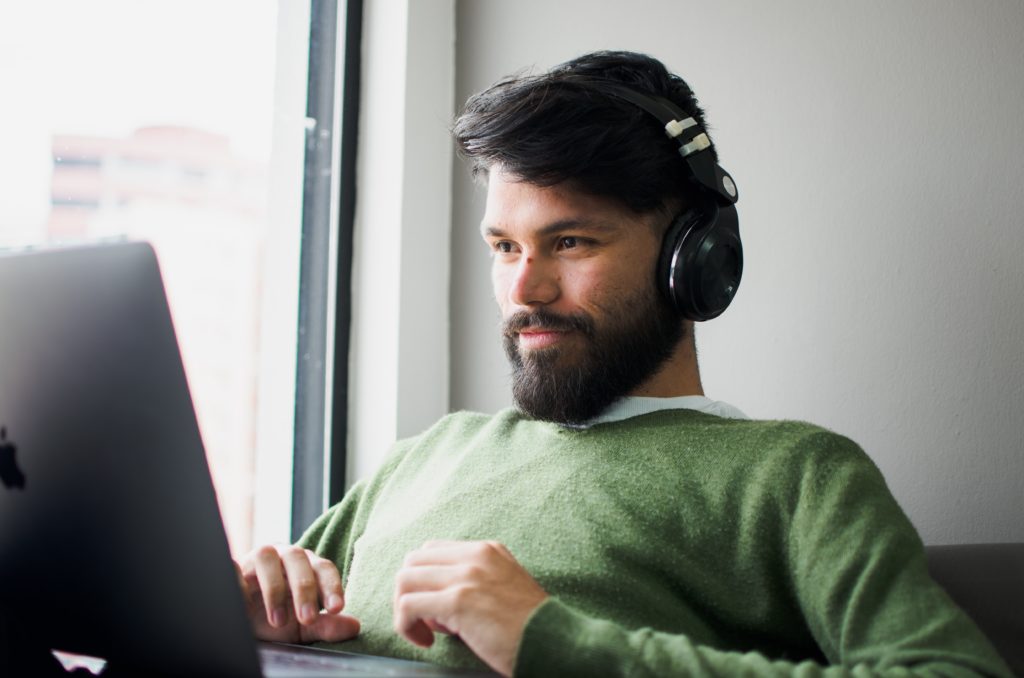My husband came trundling down the stairs declaring that he really hated group video conversations – it was the first time he had tried it. It seemed like a great way of staying in touch with his cycling friends while they weren’t able to go off together freewheeling in the countryside. They used a platform that was especially created for house parties and connected… My husband found it so irritating that he left after 20 minutes! “The signal kept failing, everyone was talking over each other so I couldn’t get a word in edgeways, and I don’t like seeing myself on the screen”. Hrrumph!
I know a lot of people who, in the situation we find ourselves in as I write this blog stuck in doors because of the Covid-19 virus, are contemplating video conferencing with trepidation, or finding that their first exploration is a bit confusing.
I will admit it – my business, helping people to speak to anyone, anywhere at any time has been run pretty exclusively offline. I hadn’t really considered working online. I’m about face to face after all. I want the personal connection when I am working with people trying to help them find their physical voice and get over any fear of speaking up. So, I had never before explored this area… until now.
Readers, I had a light bulb moment!!
I specialize in face to face.
Video conferencing is also face to face.
What if this was more exciting than scary? (and that my friends, is a mindset that we can all instruct our brain to take on!).

So, I asked myself: “What will work just as well online as off?” And I realized there was more than I might have initially thought. My yoga teacher is teaching online very successfully. It’s a question of experimentation, having fun with the medium, treating it as your friend, not your enemy!
I use ‘Zoom’ (but other video conferencing platforms are also available).
To return to my husband’s dilemma…
- In terms of losing signal, you just need to find the platform that gives you the best results. They are all under severe pressure at the moment in terms of capacity and so sometimes liable to a bit of signal failure, but it is usually fleeting.
- You can turn “self-view” off. This is where you don’t see yourself, but others can. Hover with your mouse over your picture and see the options come up.
- You can also join without video, and with just audio. At any time, you can turn the video on or off at the bottom of your screen .
- The trouble with turning video off is that it can be very disconcerting for everyone you are talking to, so make sure you have a profile picture to put in its place so that they are not just talking to a black square. Do think carefully about this option, it may be that you are doing it for reasons of safety, or that there are other people in the room with you of course. However, this is a way of being face to face, so I would suggest you think carefully before you use this option, because for the other people on the call it is odd. If it is simply that you don’t want to see yourself, choose to turn self-view off.
- When you are speaking to a large group of people (or even a small one) experiment with having it on “speaker view”. So that the person who is speaking at the time is the one occupying a big space in the middle and everyone else has a small picture round the edges.
- As for talking over each other, for large numbers the “host” can control who speaks and who doesn’t by being able to mute or unmute you, there is also a “chat” option at the bottom where you can send messages to the group or virtually “put your hand up”. Or you can simply devise your own rules as to when people speak and stick to them.
- Actually, I think if it is a small group, it is about the same rules as when you are offline. It just takes a bit of practice to tune into when people want to speak and give way if you are speaking.
- It is about being polite and “noticing” when others haven’t spoken or might be trying to speak and ensure that they have a turn. You can invite people in to speak; after all you would be like that anyway in an “actual” setting, it is just that there are more signals to pick up when you can see more of the other person’s body.

It’s like anything, the more you do it, the better you get at it and the better you do it.
So I’m off to host a family chat now – getting my parents into the act!
Keep well, keep safe, and keep talking face to face – even if it is only possible on the screen.
If you would like to know more about Locus Coaching contact Fiona Whytehead at fiona@locuscoaching.com or visit the website at www.locuscoaching.com.


Leave a comment
Required fields are marked *. Your email address will not be published.